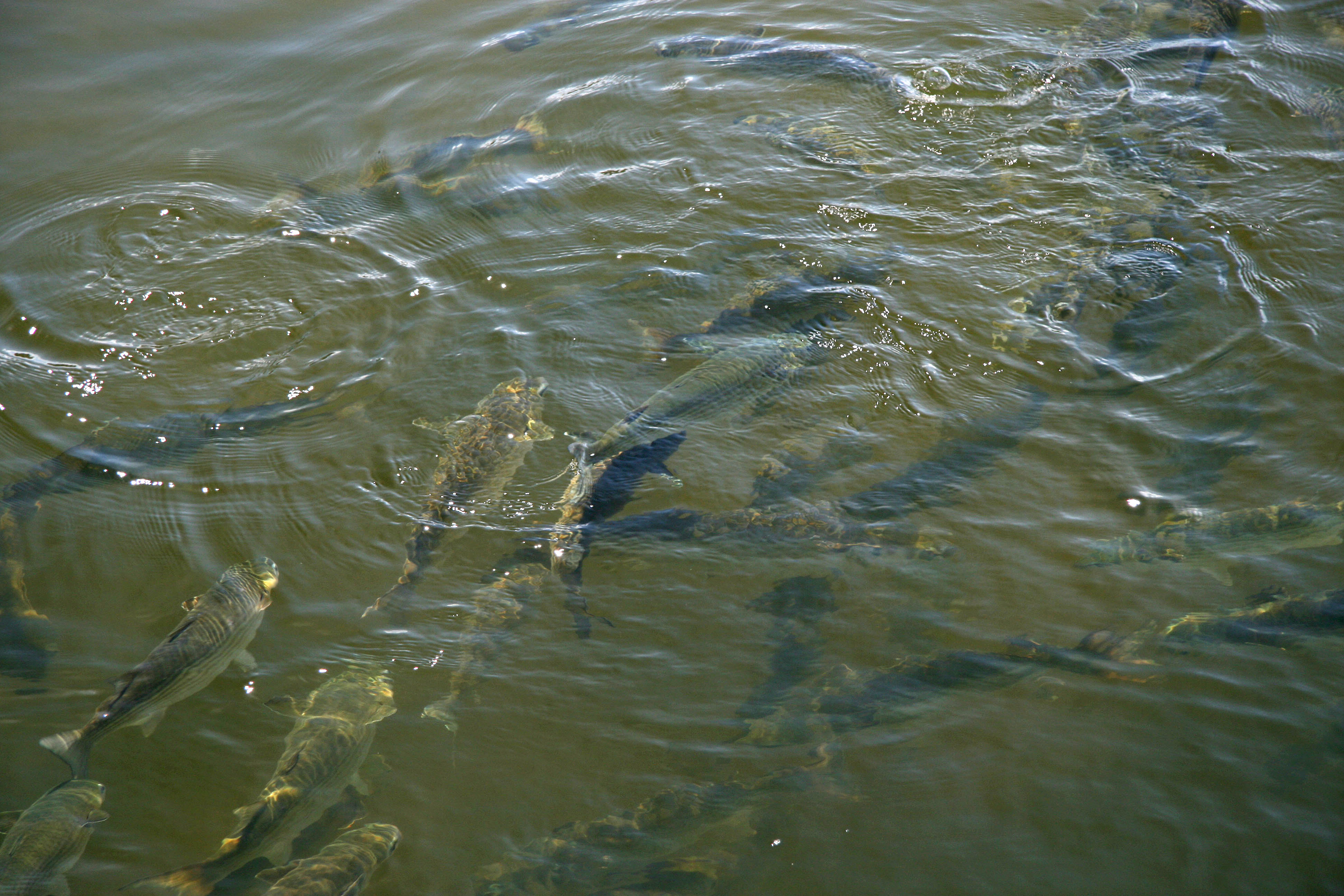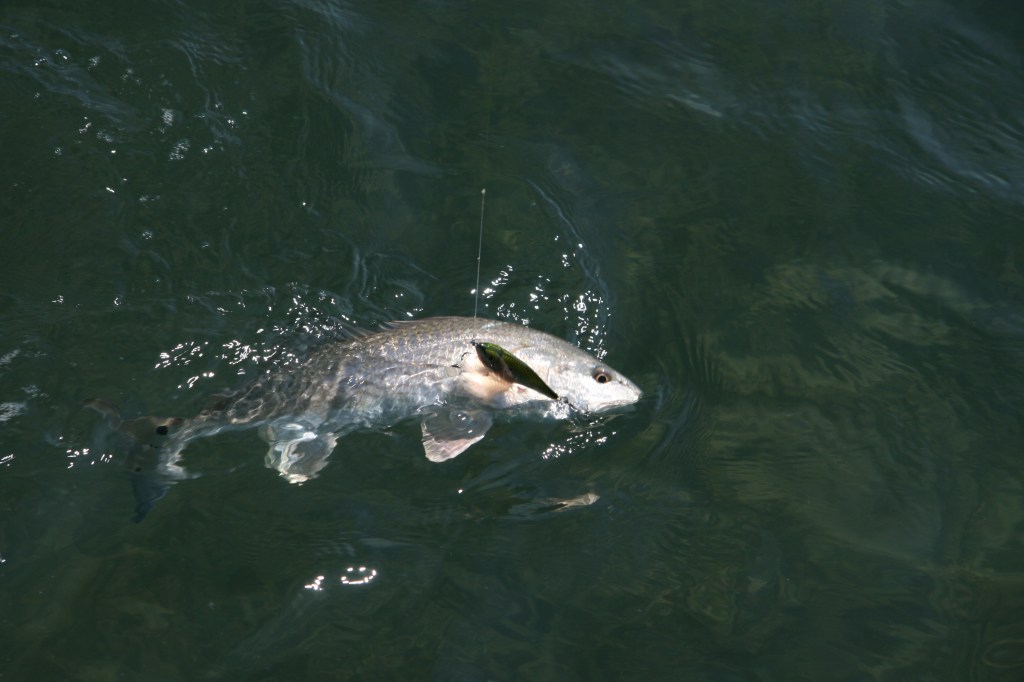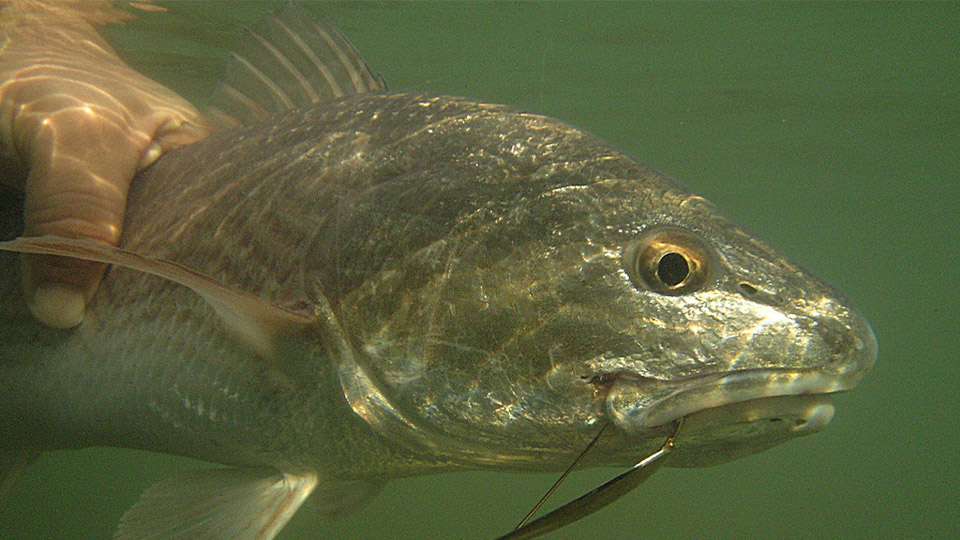
When ordering at a restaurant, there’s always someone in the group who surprises you with their meal choice. The common observation: “I never thought you’d eat that.”
This happens with redfish.
Not known as picky diners, reds eat a variety of crustacean and finfish forage, however, most of that feeding occurs lower in the water column and typically, right on the bottom.
But don’t let these fish fool you — reds are bold creatures driven largely by their appetites. Given the right scenario, they won’t hesitate to walk upstairs and blast a tempting surface meal.
Their anatomical design might suggest otherwise, but as we’ll see, redfish anglers are wise to keep several topwater options handy.
An unlikely thrill
With underslung mouths, you wouldn’t think redfish could eat topwaters, but you’d be surprised at how effective they can be. Gluttonous feeders with zero filter, a motivated red will chase down and clobber a floating bait.
“If you look at the fish, they’re really not built to pop on the surface like a trout or a snook, but they absolutely come unglued for topwaters,” said Cody Chivas, who partnered with Fred Myers III to win the 2023 Yamaha Bassmaster Redfish Cup Championship presented by Skeeter Boats at South Carolina’s Winyah Bay. “It’s one of the top three ways to fish for them, and if you’re a weekend angler, it’s probably the most exciting way to target them.”
Exciting for two reasons. First, while speckled trout and snook often attack from below and suck down a topwater in one frothy pop, redfish require an up-and-over attack that brings most of their head out of the water.
They only do that when they mean business.
Also, redfish tend to school, or at least run in clusters. Proximity means competition, so don’t be surprised to see a dozen fish chasing a topwater and elbowing one another for positioning.

Top times for topwaters
Hailing from Indian Shores, Fla., Chivas said calm water and low light bode well for any topwater presentation. You want fish to be able to easily detect and target your bait without the wariness fueled by extreme clarity.
Great for covering water to find fish, or targeting likely areas where baitfish gather, topwaters will tempt reds from grass flats, to oyster bars, to seawalls and dock perimeters. That’s pretty much a year-round principle, but Chivas said the fall finger mullet schooling tends to have reds looking up a little more.
Strategically, the topwater option helps ease proximity deficiencies.
“In a tournament setting, I’ll go to a topwater if I have a school of redfish that are nervous and won’t let me get close,” Chivas said. “Morning is best, but anytime a redfish school stays out of reach for subsurface baits, a topwater is a good bait to present to a fish that doesn’t want to be in range (of shorter casts).
“Nervous reds will feel the boat long before you can get a cast to them, but a topwater allows you to make a much longer cast than you could with (most) artificials.”
Bait choices
Chivas does plenty of redfish work with traditional cigar-shaped topwaters like the MirrOlure She Pup and Top Dog, Rapala Skitterwalk and the Zara Spook Jr. He prefers a bone color and notes how these baits excel in darker, tannic or turbid water, where the more boisterous action garners more attention.

In cleaner water, Chivas turns to a stick-style topwater like the Sebile Stick Shad or Yo-Zuri Pencil Popper. Subtlety, he said, is the deal here.
“Instead of a walk-the-dog action, they have a faster S-pattern,” Chivas said. “Especially, in Florida where the water (often) is so clean, the fish are spooky.”
Chivas also points out that jittery redfish respond better to baits with less intrusive clear bellies. Also, for any of these baits, he finds that replacing stock hooks with Owner Cutting Point Stinger Trebles helps keep his fish connected.

Tackle and technique
Chivas fishes his walking topwaters on a 7-foot, 2-inch medium-heavy spinning rod and bumps up to a 7-foot, 6-inch for the stick baits to maximize his stealthy casts. Braided main line helps with casting distance and Chivas selects his size based on the venue.
Eight- to 10-pound braid works in the clear waters of Florida and coastal Texas, while more turbid scenarios allow him to get away with 20 to 30. Same with fluorocarbon leaders — he’ll go 15- to 20-pound in clean water and 25 in lower visibility.
Like any lure, Chivas recommends trying different cadences to determine the daily preference. Just don’t blow the game before it begins.
“You don’t want too big of a splash around the fish,” Chivas said. “You always want to cast your topwater way past the fish and work the bait into them. It’s not like a soft plastic bait where you can sneak it into them.”
Chivas said this is a particularly important point when he’s trying to engage a school on the run.
“If I see a school of redfish running down a flat, I’ll bomb that topwater bait out to where I think that school is going,” he said. “You’re almost like a quarterback throwing the ball to where a receiver hasn’t reached yet — you want it to be on the highway where those fish are moving.
“As soon as the school reaches that spot, start twitching the bait to imitate the needlefish and other baitfish that will run from the school. If you get a bait to where they think nothing can get to them, that will be almost a guaranteed bite.”
Presentation strategy
Offering a best-of-both-worlds tool, popping corks, like the ones Chivas and Myers used in the 2023 victory, create a hybrid presentation with surface commotion and a vulnerable bait suspended below. Ideal for dirty water, especially with lots of trout popping shrimp, the cork rig mimics what redfish commonly hear, so they typically respond swiftly.
Notably, deconstructing that premise equips redfish anglers with a couple of strategic options.
Bait-and-switch: From the Mississippi Delta to Northeast Florida marshes, anglers often use noisy topwaters to locate reds in low-visibility scenarios. As Chivas points out, a fish that wakes or boils behind your surface bait provides a target for subsurface presentations.

Close the sale: Similarly, converting a fish’s interest into a catch might take a secondary effort. While a redfish clearly believes it can catch topside meals, it often succumbs to its own design limitation. When a red misses your topwater bait a quick subsurface delivery might convince the fish to take another shot; this time, focusing on an easier target.
“I think when that fish comes up on that 5 to 6 inch topwater, he’s pretty keyed up,” Chivas said. They’ll (aggressively bite) a paddletail jig — something that’s more in their wheelhouse.”
If all else fails, just keep working your topwater. Remember that schooling part? If there’s one thing a redfish craves, it’s what another redfish has. If you miss a bite or your fish shakes free, there’s almost always another one ready to gobble the meal.





